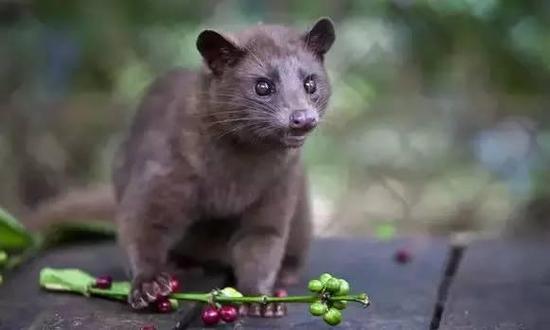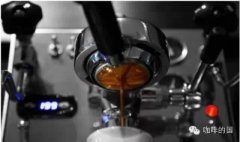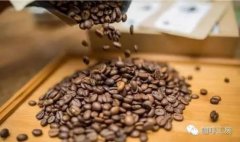You like coffee? Come and set up your own coffee corner!

For professional baristas, please follow the coffee workshop (Wechat official account cafe_style)
Analysis of the difference between one-knife flow and three-knife flow
One knife stream
Its meaning is that after steaming, only one uninterrupted injection of water is done, hence the name.
After steaming, a continuous injection of water can make the coffee powder continuously soak in water, the retention liquid can fully release the aromatic substances in the coffee powder, and the flow velocity increases continuously, reducing the water flow before the water overflows the filter cup. This method mainly controls the amount of water injection and the flow rate. It is necessary to know when to inject water so that the whole section can be taken without losing the sense of balance. Inappropriate water injection will destroy the overall sense of balance of coffee.
The main purpose of this method is to maintain a peaceful flavor and a sense of balance. What is not so good is that, because the water injection technique is not well controlled, the water falls through the filter paper on the edge of the upper layer where there is no coffee powder, so that the coffee made may be mixed with water smell.
Three-knife flow
It is a kind of brewing method that is extracted by stages and extended by one knife stream, and a section of water is injected into three stages.
Although it is an extension, but the effect is different, at least reduce the instability of the flow at the edge of the filter paper. Secondly, three-stage water injection can clearly distinguish the flavor residues in the front, middle and back, and adjust the extraction. Each time the amount of water is increased after steaming, water is usually injected when the retention liquid is about to drop to the powder level, and small, medium and large water flows are used to do three-stage extraction, depending on the state of bean powder.
This method is mainly able to segment, facilitate the identification of residual aromatic substances, but also make a richer sense of hierarchy. The downside is that the requirements of grasping the flow rate and controlling the amount of water are also relatively high.
Although many cafes are in use, attention is paid to the measurement, not the flow rate and water control. Most people go deep into this at best.
Stirring method
Stirring with a stirring rod is also a branch of the three-knife flow.
Usually in the steaming stage, a cross stirring is carried out to make the water come into full contact with the coffee powder and increase the release of aromatic substances. After that, the methods are different, some after the first stage of water injection, the second stage of water injection or the third stage of water injection, some will do a round stirring action, some will use one-cut flow and then stir, and some will do all three stages of stirring. As long as it is properly controlled, it can be done in any way.
Advantages: the mixing method can amplify the advantages of the coffee beans, especially enhance the taste of the coffee beans, and will not be too thin.
Disadvantages: although its flavor is more obvious, its return is weakened a lot. And this method has high requirements for the quality of coffee beans, if you use poor coffee beans, it will only infinitely magnify its bad flavor. In addition, because the grinding degree of coffee powder required by this method is very fine, coupled with sufficient stirring, it is easy to over-extract improperly.
This method can not only effectively enhance the release of aromatic substances, but also has a significant effect on special flavor. Not so good is that it is difficult to grasp the degree of mixing, stirring more will have a stiff sour taste, a long time will be bitter, the strength must also be feminine.
Also began to slowly enter the stage of management, stirring method note: 15 grams of powder first injected 50g hot water (because the amount of water is too little will cause can not be stirred, so here the steaming time injected 50g hot water), stirring so that the water and coffee powder in uniform contact.
By the way, many people wonder what it means to make a small hole in the middle of the powder before steaming and injecting water. In fact, the purpose is very simple, that is, because there is more powder in the center, it is used to concentrate the flow and distribute the flow evenly. Of course, it is not necessary to do so, and the impact of water flow during water injection can also achieve this goal.
Understanding of segmented extraction and Water Control
To learn to control water, you need to know what kind of action can make the coffee powder release coffee most evenly and achieve a more uniform extraction in the whole process when the coffee powder is deposited in the filter cup. The answer, of course, is that most coffee powder can be melted and leached at the same temperature, the same stirring, the same permeable angle and the same flip frequency. (with regard to the uniformity of powder, water temperature and other parameters, let's not discuss here.) well, in order to maximize this requirement, we must wash it with the right flow, with the right angle and action.
In this way, controlling the flow of water at a steady and uniform speed and rushing around mosquito-repellent incense rings has become a recognized and effective action that can relatively guarantee that coffee powder is subjected to similar shocks in both immersion and tumbling. It can make beginners better to cook.
For extraction, there are four important points:
, grinding degree, powder ball size, the less the powder ball, the higher the extraction rate (the powder ball is small, but more, the surface area of contact with water is large), so when the taste is not enough, the easiest way is to adjust it fine.
In view of the above two points, we can explain why the wear is poor, easy to produce miscellaneous smell, because there is a lot of very fine powder, which partially increases the extraction rate, showing a mixed smell.
When the time and other parameters are the same, the longer the time, the higher the extraction rate, which is well known.
Stirring and adding external force will increase the extraction rate, whether through additional utensils or through water flow.
, temperature, different baking degree of beans, different water temperature.
What are the factors that affect coffee:
1 water quality 2 water temperature 3 coffee beans 4 powder quantity 5 grinding 6 water flow size 7 extraction rate 8 cooking time
Now let me explain briefly how to cook with three knives:
Of course, what that good cup of coffee needs is a bag of coffee beans, and then we choose a grinding degree close to the size of granulated sugar, 92 degrees water, and fill it with water in circles from the inside to the outside and from the outside to the inside.
Today we're going to use the most common water to wash Yega Kozel, and we chose a v60 filter cup, 15 grams of powder, 1:16 ratio, 2 minutes:
The V60 filter cup is chosen because it uses a long and short spiral convex groove design, in the eyes of many people in order to increase the breathable effect of the steaming time, but this is actually only one of the design reasons. The spiral convex groove is designed to twist and squeeze the scoured water, extend the extraction route at the same time, and increase the contact time between coffee powder and water to ensure the extraction of coffee powder.
The first step is to inject 30g water for 25 seconds.
The second step begins to circle the water injection from the center to the outside and then back to 100g, which is completed in 1 minute.
The third step is to inject 235g water in 2 minutes.
The fragrance of jasmine with 3-stage extraction will be more abundant, the flavor will be richer and the sweetness of sour and sweet will be higher than that of jasmine with 1-stage extraction.
3-stage water injection to extract, this method is mainly aimed at relatively shallow baked beans, can help people with poor water control to prolong their brewing time, no longer before the time to fill up the water, can better extract the substances in the coffee.
However, if the water injection is uneven, there will still be bitterness and mixed taste, so you still need to practice the flow.
Important Notice :
前街咖啡 FrontStreet Coffee has moved to new addredd:
FrontStreet Coffee Address: 315,Donghua East Road,GuangZhou
Tel:020 38364473
- Prev

Practical information | Translation of the Handbook of Professional baristas (7) drip coffee
Professional baristas exchange please follow the coffee workshop (Wechat official account cafe_style) "Professional barista Handbook" author: Scott Rao translation: uncle Dewa chapter 6 drip coffee freshness drip coffee has a bad reputation around the world for many reasons. Many places sell light and bitter drip-filtration coffee that has been heated in a pot for a lifetime. And some essence.
- Next

dry goods| Professional Barista Manual (VI) Systematic Operation of Barista
The Barista's Manual by Scott Rao Chapter 5 Systematic Operation of the Barista Tools to Improve Efficiency Busy cafes must take measures to improve efficiency. They can't always make one drink at a time foolishly. More importantly, baristas must be trained to maximize efficiency without compromising the quality of their products.
Related
- Beginners will see the "Coffee pull flower" guide!
- What is the difference between ice blog purified milk and ordinary milk coffee?
- Why is the Philippines the largest producer of crops in Liberia?
- For coffee extraction, should the fine powder be retained?
- How does extracted espresso fill pressed powder? How much strength does it take to press the powder?
- How to make jasmine cold extract coffee? Is the jasmine + latte good?
- Will this little toy really make the coffee taste better? How does Lily Drip affect coffee extraction?
- Will the action of slapping the filter cup also affect coffee extraction?
- What's the difference between powder-to-water ratio and powder-to-liquid ratio?
- What is the Ethiopian local species? What does it have to do with Heirloom native species?

